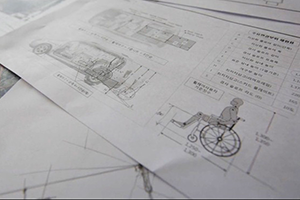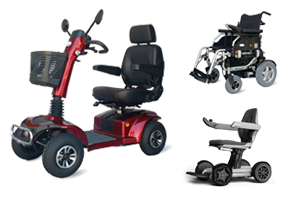See What Titration ADHD Adults Tricks The Celebs Are Using
페이지 정보

본문
ADHD private titration adhd
titration Adhd Adults is a process that involves identifying the best medication at the most effective dose to manage ADHD symptoms. It takes time and patience as your healthcare professional gradually increases your dosage over the course of weeks.
 It is important to schedule a clinical monitoring appointment regularly (every 3 months) to adjust the dosage in accordance with the effects of the medication and any residual symptoms.
It is important to schedule a clinical monitoring appointment regularly (every 3 months) to adjust the dosage in accordance with the effects of the medication and any residual symptoms.
Medicines
Medication is usually effective in reducing symptoms of ADHD, especially when combined psychosocial treatment. The most effective method of treatment is medication. treatment option for adult patients with ADHD (Weiss et al 1999). Unfortunately, 20 percent of people suffering from ADHD are not responsive to the first treatment they attempt.
The doctor will gradually increase the dose of the medication to achieve the ideal balance between efficacy as well as adverse negative effects. This process can take a few weeks. A physician who is knowledgeable will take the time to fully understand the unique circumstances of each patient, including the effects of any other medications they're taking. They also assess the severity of symptoms in different situations.
The majority of people with ADHD respond well to stimulants. They are prescribed as short or long-acting and the choice is typically determined by the time that the patient is able to take their medication, whether they are able to swallow pills or prefer liquids, and the cost. Long-acting stimulants are safer, but they can have a bad taste and wear off at midday. Long-acting stimulants are also more expensive than those that are shorter-acting.
Medications used to treat adult ADHD include methylphenidates, amphetamines, and atomoxetine. In addition to reducing ADHD symptoms, these medications can reduce depression and anxiety in some people and may help in treating comorbid conditions such as Tourette's syndrome, bipolar disorder and addiction to substances.
Methylphenidate is among the most commonly prescribed and effective medication. The most powerful methylphenidate is Adderall however, doctors frequently adjust the dosage of a generic version, called Concerta which has a good safety record. In certain situations doctors might prescribe Vyvanse as a long-acting stimulant that is considered a prodrug. This means that it is processed by the body into its active form. The FDA warns against water titration with other drugs that have a long-acting effect, such as Adderall XR or Ritalin LA.
The most frequently reported adverse effect of stimulants for adults is mood lability. If it's a serious issue, switching to another type of medication or adding an anti-stimulant like Strattera might aid.
Dosage
The goal of titration is finding the right dosage of medication that controls ADHD symptoms and minimizes side effects. ADHD medication can be different for each individual and determining the appropriate dose can be a long process. Doctors typically start with a low dose and gradually increase it over the course of a period of between 1 and 3 weeks. They will repeat this process until the patient is experiencing the maximum effect of the medication and is not experiencing any adverse negative effects.
The starting dose of the medication depends on various factors, including prior experiences with stimulant treatment, age, height and weight, metabolic or genetic variations, comorbidities, and severity of symptoms. Titration is a possibility for any medication intended to treat ADHD. This includes nonstimulants such as Strattera and clonidine, guanfacine or guanfacine-extended-release, but also stimulants like methylphenidate, amphetamine, and clonidine.
Stimulants generally are the first-line treatment for adults suffering from ADHD. They are highly effective, relatively safe, and are available in a wide range of formulations. They can cause adverse effects such as headaches and jitteriness. Patients and their families are often concerned about weight loss. A significant proportion of people also report using psychostimulants for non-medical reasons, for instance to improve academic or work performance or for fun ("getting high").
Titration can be used to reduce the risk of having these unwanted effects by ensuring that the medication is taken at the correct dose. It can be used to identify any potential issues with a specific formulation or to track its effectiveness over time.
It is important to keep in mind that, despite an increasing amount of evidence from RCTs supporting the use of titration for individual patients However, these studies were developed at a group level rather than at an individual level. In addition, many doctors may have little or no experience of titration at the individual patient-level. In the ideal scenario, long-term RCTs must be conducted to provide information about the long-term effects of pharmacotherapy in individuals with ADHD.
Side Effects
It can take several weeks before a person can notice significant improvements in their symptoms after starting stimulant ADHD medication. This is because the medication must be titrated, or adjusted to find the appropriate dosage for each person. Doctors begin with a small dosage and gradually increase it every few weeks, until they reach their target dosage. This is when symptoms are improved most with the least side negative effects.
Titrating is necessary as adults who have used stimulant medication for ADHD in the past have developed tolerance which means that their bodies are no longer responsive to the drug. The titration procedure is also beneficial for adults who are new to stimulant medication. It can help determine the appropriate dose for starting.
Amphetamines, such as Vyvanse and atomoxetine, are stimulant drugs that can be used to treat ADHD. They are often prescribed in combination with psychosocial treatments, such as cognitive behavioral therapy (CBT) which has been demonstrated to be effective in improving adhd titration waiting list symptoms as well as comorbid disorders like depression and anxiety.
The side effects of medication could include dry mouth, difficulty sleeping, and other benign side effects. These are usually temporary and are not harmful. Those with severe, serious, or persistent side effects should inform the doctor. Rare side effects include heart problems and manic or delusional symptoms as well as hallucinations (such as hearing or seeing bugs), and agitation.
Many who begin taking how long does adhd titration take-acting ADHD stimulants are disappointed when their initial doses are not enough to manage ADHD symptoms. The good news is that 80 % of people who take two or more drugs will show positive results. If the first medication isn't enough to improve the condition, it is possible to gradually down the dosage or switch to a nonstimulant medication such as Strattera or Qelbree.
Monitoring
During the titration phase of ADHD medication, you'll be adjusting your medication until it begins to improve your symptoms significantly while at the same time minimizing side effects. The process can take between 8 and 12 weeks to complete and requires constant communication with your healthcare professional.
It's best to adjust your dosage in line with consistent observations over a period of time rather than a single experience. This will ensure you're receiving enough coverage from your medication and minimize the chance of tolerance.
Tolerance is a major issue when it concerns ADHD medications, as it can hinder the effectiveness of the treatment. Finding strategies to reduce or prevent tolerance will require ongoing research however, some easy steps can reduce the chance of developing tolerance. Regularly checking in and communicating with your healthcare professionals can help reduce the risk of developing tolerance. Recording symptoms over time, along with regular check-ins can help.
Another important factor is ensuring that you're taking your medication exactly as prescribed, as overdosing can cause negative side effects like diminished appetite, sedation, and anxiety. CareClinic is an excellent tool for keeping track of your daily dose.
It may take a long time to titrate but it's essential to find the right dosage and medication for your needs. It is also crucial to keep open communication with your doctor since they will be able to better comprehend the complexities of ADHD medication and make adjustments to suit your needs.
The process of titration adhd medications what is titration in adhd a blend of art and science, which is essential to get the most effective results for every patient. This individualized approach can enhance the clinical outcomes, patient satisfaction and tolerability. This is especially important in the context of an adult population that has higher levels of comorbidities as well as complications due to discontinuation. Other individual considerations include the patient's expectations related to drug efficacy and timing, their health literacy, and other personal priorities. The authors acknowledge funding support from the National Institute of Mental Health, Lilly, Medice, and Engelhard Arzneimittel.
titration Adhd Adults is a process that involves identifying the best medication at the most effective dose to manage ADHD symptoms. It takes time and patience as your healthcare professional gradually increases your dosage over the course of weeks.
 It is important to schedule a clinical monitoring appointment regularly (every 3 months) to adjust the dosage in accordance with the effects of the medication and any residual symptoms.
It is important to schedule a clinical monitoring appointment regularly (every 3 months) to adjust the dosage in accordance with the effects of the medication and any residual symptoms.Medicines
Medication is usually effective in reducing symptoms of ADHD, especially when combined psychosocial treatment. The most effective method of treatment is medication. treatment option for adult patients with ADHD (Weiss et al 1999). Unfortunately, 20 percent of people suffering from ADHD are not responsive to the first treatment they attempt.
The doctor will gradually increase the dose of the medication to achieve the ideal balance between efficacy as well as adverse negative effects. This process can take a few weeks. A physician who is knowledgeable will take the time to fully understand the unique circumstances of each patient, including the effects of any other medications they're taking. They also assess the severity of symptoms in different situations.
The majority of people with ADHD respond well to stimulants. They are prescribed as short or long-acting and the choice is typically determined by the time that the patient is able to take their medication, whether they are able to swallow pills or prefer liquids, and the cost. Long-acting stimulants are safer, but they can have a bad taste and wear off at midday. Long-acting stimulants are also more expensive than those that are shorter-acting.
Medications used to treat adult ADHD include methylphenidates, amphetamines, and atomoxetine. In addition to reducing ADHD symptoms, these medications can reduce depression and anxiety in some people and may help in treating comorbid conditions such as Tourette's syndrome, bipolar disorder and addiction to substances.
Methylphenidate is among the most commonly prescribed and effective medication. The most powerful methylphenidate is Adderall however, doctors frequently adjust the dosage of a generic version, called Concerta which has a good safety record. In certain situations doctors might prescribe Vyvanse as a long-acting stimulant that is considered a prodrug. This means that it is processed by the body into its active form. The FDA warns against water titration with other drugs that have a long-acting effect, such as Adderall XR or Ritalin LA.
The most frequently reported adverse effect of stimulants for adults is mood lability. If it's a serious issue, switching to another type of medication or adding an anti-stimulant like Strattera might aid.
Dosage
The goal of titration is finding the right dosage of medication that controls ADHD symptoms and minimizes side effects. ADHD medication can be different for each individual and determining the appropriate dose can be a long process. Doctors typically start with a low dose and gradually increase it over the course of a period of between 1 and 3 weeks. They will repeat this process until the patient is experiencing the maximum effect of the medication and is not experiencing any adverse negative effects.
The starting dose of the medication depends on various factors, including prior experiences with stimulant treatment, age, height and weight, metabolic or genetic variations, comorbidities, and severity of symptoms. Titration is a possibility for any medication intended to treat ADHD. This includes nonstimulants such as Strattera and clonidine, guanfacine or guanfacine-extended-release, but also stimulants like methylphenidate, amphetamine, and clonidine.
Stimulants generally are the first-line treatment for adults suffering from ADHD. They are highly effective, relatively safe, and are available in a wide range of formulations. They can cause adverse effects such as headaches and jitteriness. Patients and their families are often concerned about weight loss. A significant proportion of people also report using psychostimulants for non-medical reasons, for instance to improve academic or work performance or for fun ("getting high").
Titration can be used to reduce the risk of having these unwanted effects by ensuring that the medication is taken at the correct dose. It can be used to identify any potential issues with a specific formulation or to track its effectiveness over time.
It is important to keep in mind that, despite an increasing amount of evidence from RCTs supporting the use of titration for individual patients However, these studies were developed at a group level rather than at an individual level. In addition, many doctors may have little or no experience of titration at the individual patient-level. In the ideal scenario, long-term RCTs must be conducted to provide information about the long-term effects of pharmacotherapy in individuals with ADHD.
Side Effects
It can take several weeks before a person can notice significant improvements in their symptoms after starting stimulant ADHD medication. This is because the medication must be titrated, or adjusted to find the appropriate dosage for each person. Doctors begin with a small dosage and gradually increase it every few weeks, until they reach their target dosage. This is when symptoms are improved most with the least side negative effects.
Titrating is necessary as adults who have used stimulant medication for ADHD in the past have developed tolerance which means that their bodies are no longer responsive to the drug. The titration procedure is also beneficial for adults who are new to stimulant medication. It can help determine the appropriate dose for starting.
Amphetamines, such as Vyvanse and atomoxetine, are stimulant drugs that can be used to treat ADHD. They are often prescribed in combination with psychosocial treatments, such as cognitive behavioral therapy (CBT) which has been demonstrated to be effective in improving adhd titration waiting list symptoms as well as comorbid disorders like depression and anxiety.
The side effects of medication could include dry mouth, difficulty sleeping, and other benign side effects. These are usually temporary and are not harmful. Those with severe, serious, or persistent side effects should inform the doctor. Rare side effects include heart problems and manic or delusional symptoms as well as hallucinations (such as hearing or seeing bugs), and agitation.
Many who begin taking how long does adhd titration take-acting ADHD stimulants are disappointed when their initial doses are not enough to manage ADHD symptoms. The good news is that 80 % of people who take two or more drugs will show positive results. If the first medication isn't enough to improve the condition, it is possible to gradually down the dosage or switch to a nonstimulant medication such as Strattera or Qelbree.
Monitoring
During the titration phase of ADHD medication, you'll be adjusting your medication until it begins to improve your symptoms significantly while at the same time minimizing side effects. The process can take between 8 and 12 weeks to complete and requires constant communication with your healthcare professional.
It's best to adjust your dosage in line with consistent observations over a period of time rather than a single experience. This will ensure you're receiving enough coverage from your medication and minimize the chance of tolerance.
Tolerance is a major issue when it concerns ADHD medications, as it can hinder the effectiveness of the treatment. Finding strategies to reduce or prevent tolerance will require ongoing research however, some easy steps can reduce the chance of developing tolerance. Regularly checking in and communicating with your healthcare professionals can help reduce the risk of developing tolerance. Recording symptoms over time, along with regular check-ins can help.
Another important factor is ensuring that you're taking your medication exactly as prescribed, as overdosing can cause negative side effects like diminished appetite, sedation, and anxiety. CareClinic is an excellent tool for keeping track of your daily dose.
It may take a long time to titrate but it's essential to find the right dosage and medication for your needs. It is also crucial to keep open communication with your doctor since they will be able to better comprehend the complexities of ADHD medication and make adjustments to suit your needs.
The process of titration adhd medications what is titration in adhd a blend of art and science, which is essential to get the most effective results for every patient. This individualized approach can enhance the clinical outcomes, patient satisfaction and tolerability. This is especially important in the context of an adult population that has higher levels of comorbidities as well as complications due to discontinuation. Other individual considerations include the patient's expectations related to drug efficacy and timing, their health literacy, and other personal priorities. The authors acknowledge funding support from the National Institute of Mental Health, Lilly, Medice, and Engelhard Arzneimittel.
- 이전글5 People You Should Be Getting To Know In The ADHD Adult Test Industry 24.09.13
- 다음글14 Questions You Shouldn't Be Uneasy To Ask Motorized Treadmills 24.09.13
댓글목록
등록된 댓글이 없습니다.





